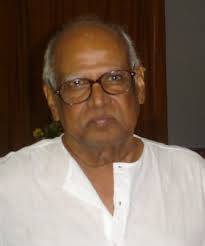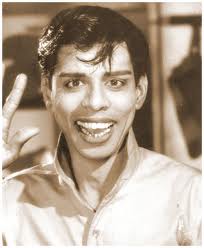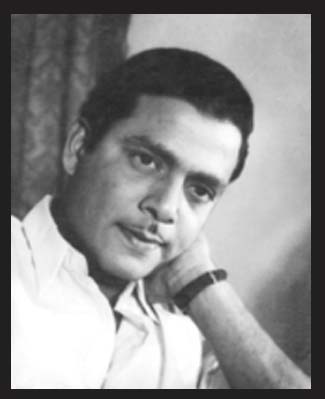
Showing all artists born in 1933
Bapu
Bapu was born on 15 December 1933,in Narsapur, in present-day West Godavari district, Andhra Pradesh, India to Sattiraju Venugopala Rao and Suryakantam. He has worked as a political cartoonist for the newspaper Andhra Patrika in 1945. He holds B.Com (1953) and BL (1955) from University of Madras.
Bapu introduced a painting style of simple bright colours. His unique style consisted of economy of strokes, freehand drawing and a lack of background clutter.
His paintings focus on Hindu mythological characters, and he has painted the Hindu epic Ramayana as a pictorial story. His character portrayals, such as Shiva, Bhima, Duryodhana, look distinctly male with wide chests, large jaws and large biceps; while Krishna and Rama are more feminine in build. Bapu has also introduced a new style of cursive writing in Telugu. The font is h... See full bio
Bapu introduced a painting style of simple bright colours. His unique style consisted of economy of strokes, freehand drawing and a lack of background clutter.
His paintings focus on Hindu mythological characters, and he has painted the Hindu epic Ramayana as a pictorial story. His character portrayals, such as Shiva, Bhima, Duryodhana, look distinctly male with wide chests, large jaws and large biceps; while Krishna and Rama are more feminine in build. Bapu has also introduced a new style of cursive writing in Telugu. The font is h... See full bio
Known For:
Sri Rama Rajyam
Nagesh
Nagesh (born Nageswaran C. Krishna Gundu Rao) was a Tamil film actor, mostly remembered for his roles as a comedian during the 1960s. He is regarded as one of the most prolific comedians in Tamil cinema.
Nagesh was born in a Kannada family from Dharapuram, Erode. He was educated in Madras and worked as a clerk in the Indian Railways before entering Tamil film industry. He acted in over 1,000 Indian films from 1958 to 2008, performing in variety of roles as comedian, lead roles, supporting actor and antagonist. He died on 31 January 2009.
In a stark contrast to the comic roles he performed, Nagesh's personal life was wrought with suffering. After losing his father at an early age, Nagesh had to endure a weak financial situation and family ostracism which plagued him throughout his life. The film Server Sundaram, a rags to ric... See full bio
Nagesh was born in a Kannada family from Dharapuram, Erode. He was educated in Madras and worked as a clerk in the Indian Railways before entering Tamil film industry. He acted in over 1,000 Indian films from 1958 to 2008, performing in variety of roles as comedian, lead roles, supporting actor and antagonist. He died on 31 January 2009.
In a stark contrast to the comic roles he performed, Nagesh's personal life was wrought with suffering. After losing his father at an early age, Nagesh had to endure a weak financial situation and family ostracism which plagued him throughout his life. The film Server Sundaram, a rags to ric... See full bio
Known For:
Dasavathaaram
, Nenjai Thodu
, Imsai Arasan 23rd Pulikecei
, Saravana
, Vasool Raja MBBS
, Kaadhal Kondein
, Panchathantiram
, Poovellam Un Vaasam
, Minnale
, Rhythm
, Desiya Geetham
, Kaathala Kaathala
, Poochudava
, Pagaivan
, Raasi
, Avvai Shanmughi
, Poove Unakkaga
, Meendum Savithri
, Ayudha Poojai
, Nammavar
, Thambi Pondatti
, Rickshaw Mama
, Thalapathi
, Cheran Pandiyan
, Gopura Vasalile
, Raja Kaiya Vacha
, Michael Madana Kama Rajan
, Mounam Sammadham
, Athisaya Piravi
, Apoorva Sagodharargal
, Kadal Meengal
, Apoorva Raagangal
, Vietnam Veedu
, Saraswati Sabatham
Sridhar
C Sridhar (22 July 1933 – 20 October 2008) was a South Indian screenwriter and film director. Sridhar hailed from Chitthamur, a village near Madurantakam, Tamil Nadu. He studied at St. Joseph's Higher Secondary School (Chengalpattu), where he began writing and staging plays while he was in Grade 7. He entered films as a dialogue writer when his play Ratha Pasam was adapted as a film. He made his debut as a director with Kalyanaparisu. He started his own production company Chitralaya in 1961 and made a series of commercially successful films like Nenjil Ore Alayam and Then Nilavu. The latter which has Gemini Ganesan and Vyjayanthimala in the lead was the first Tamil film to be shot in Jammu and Kashmir.In all his films he used a combination of stars, melodrama and melodious songs. He has directed films in Tamil, Hindi, Telugu and Kannada.
Kaadhalikka Ne... See full bio
Kaadhalikka Ne... See full bio



